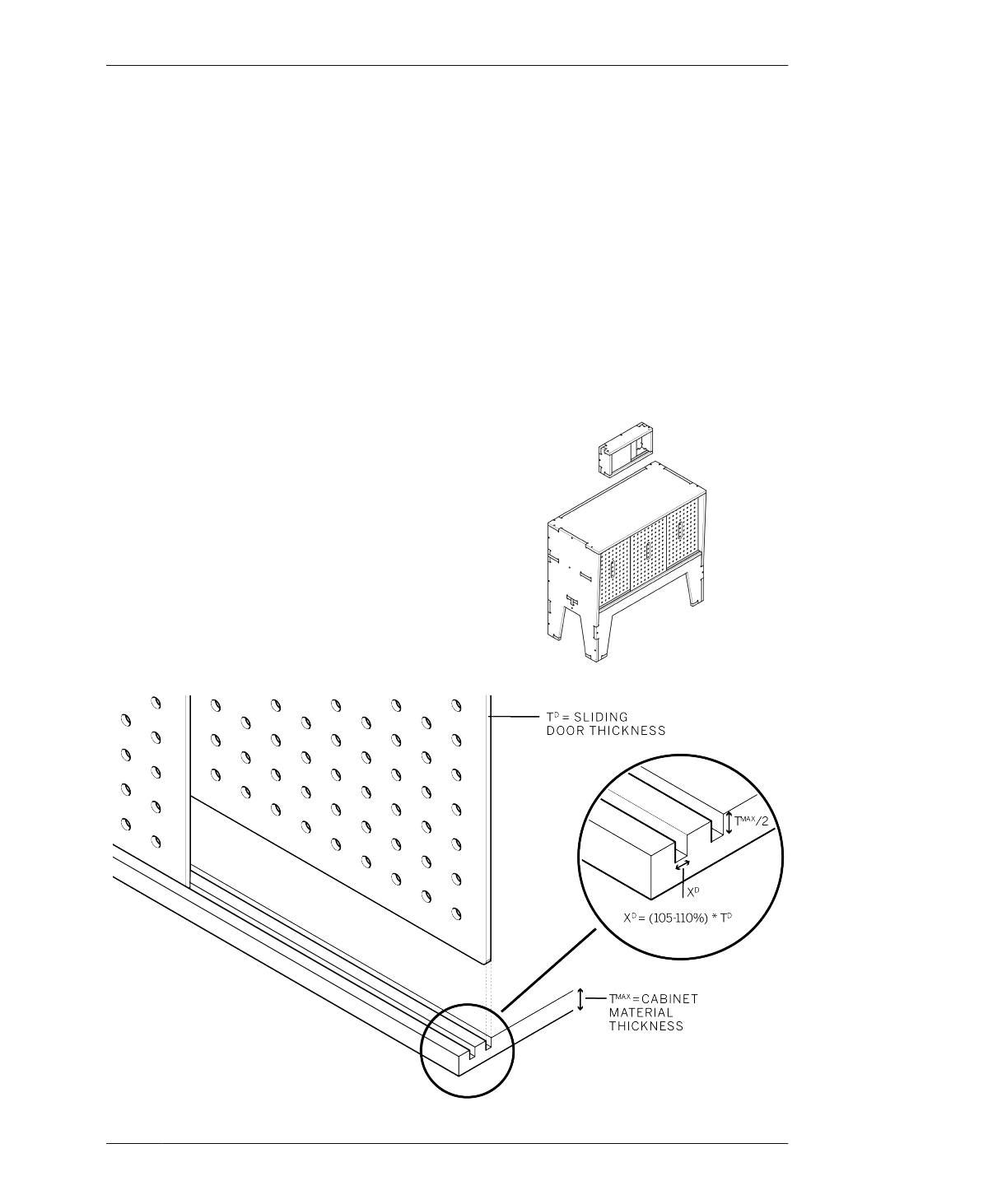
CREATE THE PARTIAL PROTOTPYE
04: Calculate TDMAX, your actual material
thickness.
14, and add S to the filename (e.g.,
AtFAB_PKC_TEST_9842.skp).
05: In the scaled CAD file, measure the width of
the slots (X) that accommodates the sliding
door panels. For the door panels to slide freely
and stay upright, the pocket width (X) should
be 5%–10% wider than TDMAX.
Slot Width = X
5% * TDMAX < X < 10% * TDMAX
06: If the slot is greater or less than your calcu-
lation, manually adjust the pocket width (X) on
both top and bottom parts in the CAD file to
give the necessary tolerance. As you adjust the
width of the pockets, preserve the vertical
alignment between the pockets in both top and
bottom parts.
PREPARE TOOLPATHS
All of the Credenza toolpaths are shown in
Figure 15-5.
08: Following the steps in “Job Setup” on page
170, import the scaled test piece file into
VCarve. Locate the test piece cabinet and door
parts, each on a clear area of their respective
sheets.
FIGURE 15-3
The Poke Credenza test
piece in context
07: After adding embellishments, scaling the
file, and adjusting the door slots, you are ready
to save your file. Select Save As on the pull-
down menu, save your file in SketchUp release
FIGURE 15-4
Adjust slot width for
sliding doors
15/POKE CREDENZA
299
